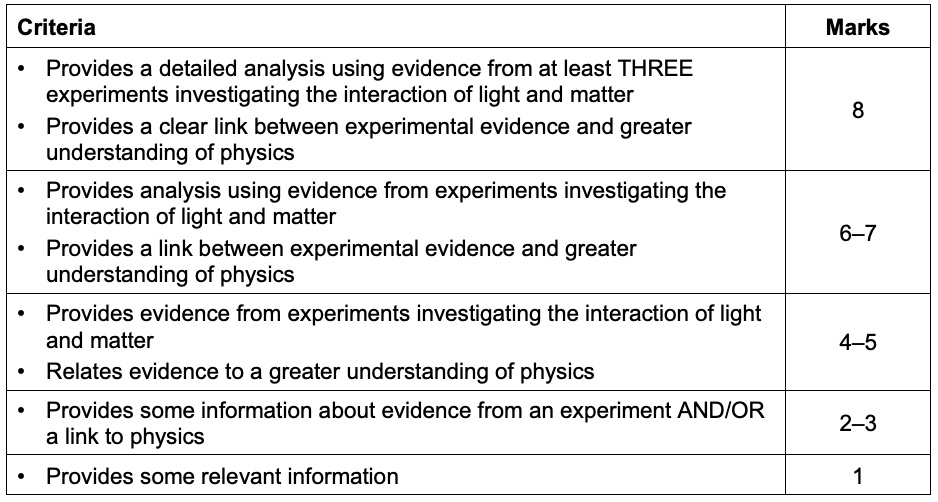
Extended Response questions in HSC Physics are known for being hard to tackle. Unlike calculation questions, or short answer questions, an 8 or 9 marker in physics often intimidating and confusing for students. What markers are looking for isn’t grandiose, flowery language, essay-like structure or even coherent sentences. They want to see that you know what you’re talking about, and if you can convey that you understand the content, then you get the marks. This can be in the form of annotated diagrams, drawings, mathematical notation, and calculations. Lets look at the following question:
“Many scientists have performed experiments to explore the interaction of light and matter. Analyse how evidence from at least THREE such experiments has contributed to our understanding of physics.”
Here, the first step must be to break down the question into its essentials: Analyse, evidence, interaction of light and matter, THREE EXPERIMENTS, our understanding of physics. We should then briefly jot down a plan so we can organise our response, as there are marks allocated for coherence and conciseness. There’s no need for an introduction — here, we can get straight to grabbing marks. We can break up our answer into 3 experiments, stating the name and person responsible for the experiment, the evidence that it provides, how it involves interaction between matter and light, and how it impacted our understanding of physics. Here is a sample response below:
Step 1: Experiment 1 (Photoelectric Effect – Einstein)
– Evidence: Explain the experiment briefly.
– Interaction: Discuss photons and electrons.
– Understanding: Highlight how it demonstrated particle-like properties of light, leading to quantum theory.
Step 2: Experiment 2 (Double-Slit Experiment – Young)
– Evidence: Summarize setup and observations.
– Interaction: Discuss interference and diffraction.
– Understanding: Emphasize how this revealed wave-like properties of light.
Step 3: Experiment 3 (Spectral Lines – Bohr Model)
– Evidence: Briefly describe emission spectra experiments.
– Interaction: Discuss electrons transitioning between energy levels.
– Understanding: Outline how this clarified atomic structure and quantization.
Step 4: Conclusion (Brief and Clear)
– Concisely summarize how these experiments collectively deepened the scientific understanding of light and matter.
Parham Sepasgozar

